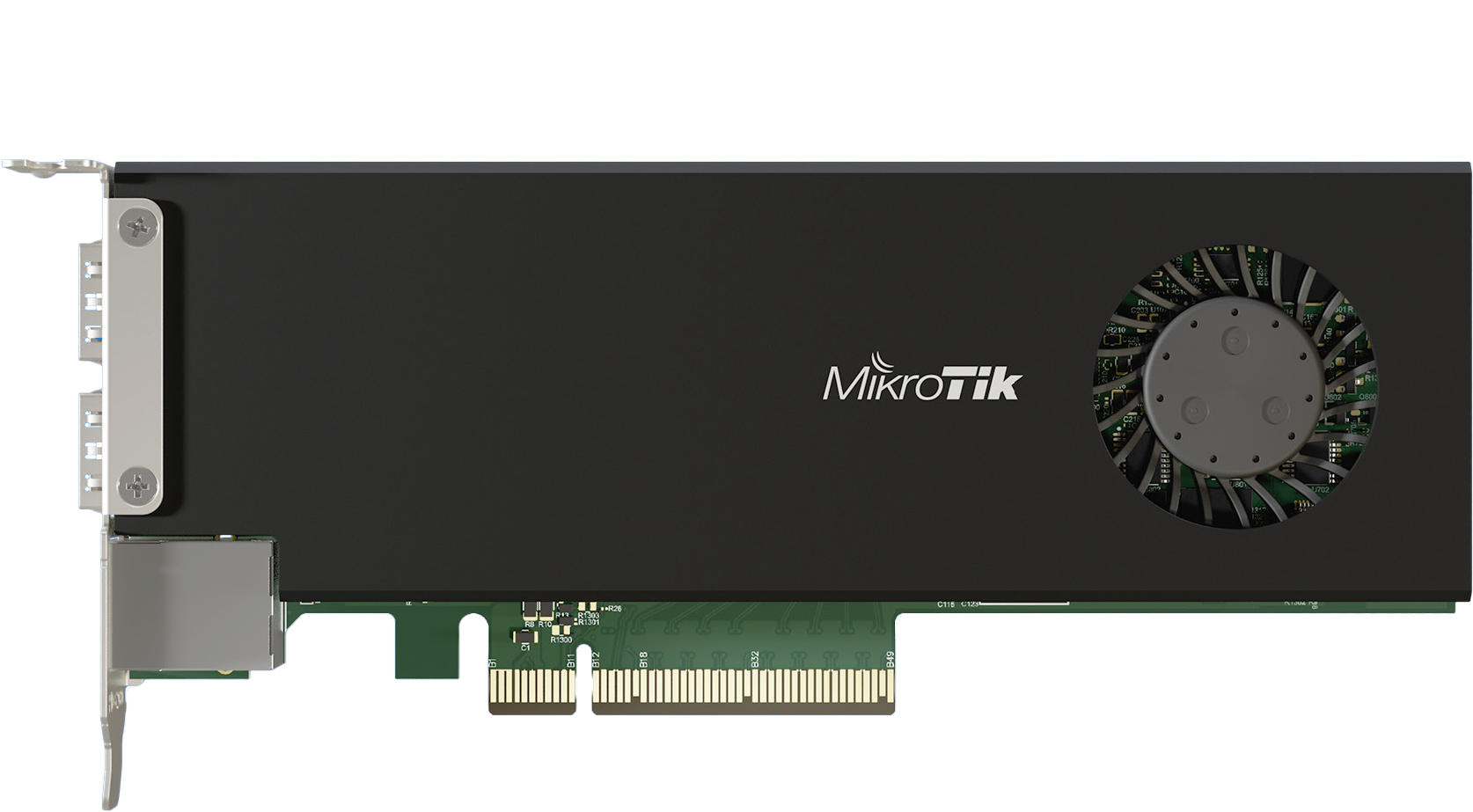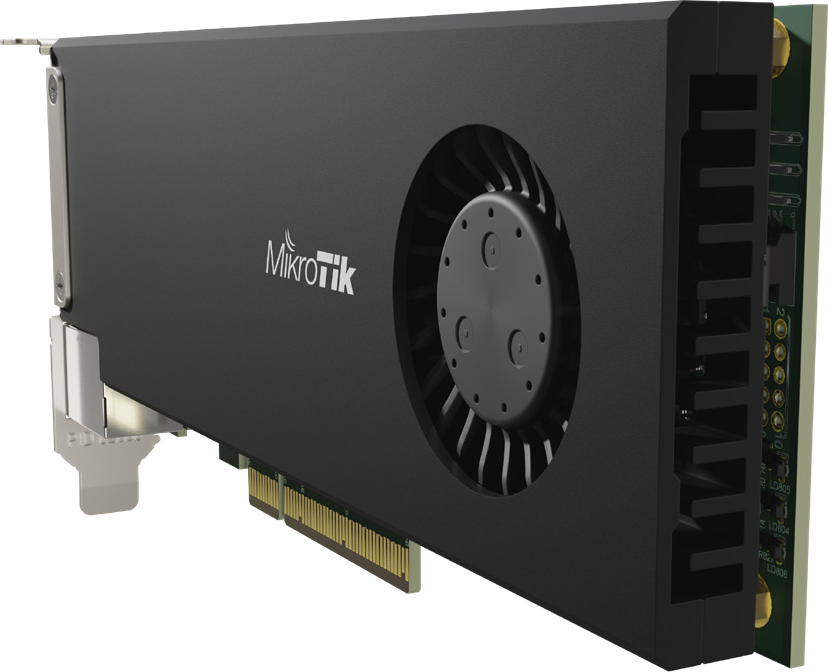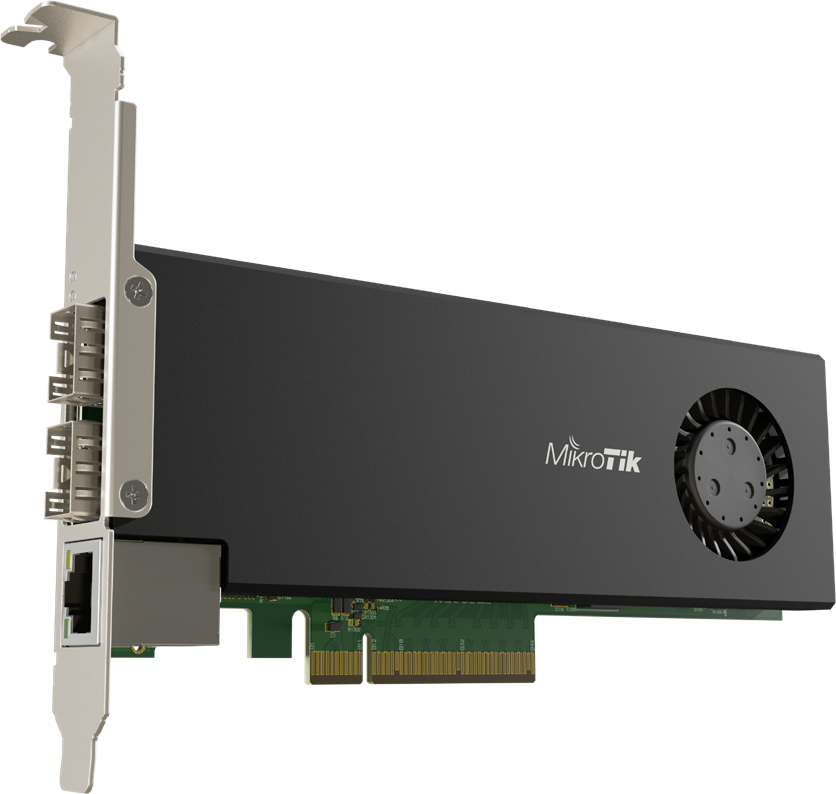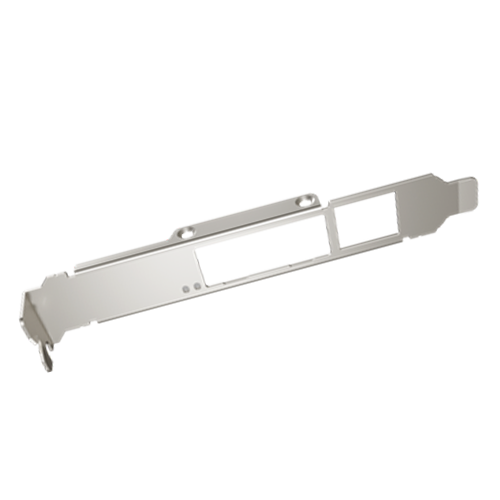
CCR2004-1G-2XS-PCIe
network interface card!
The smart and easy way to create 25 Gigabit networks if you want to save space in your server room.

FEATURES
ARMV8 CPU
CCR2004 IN PCIE 3.0 X8
FORM-FACTOR
25 GIGABIT NETWORKING
ETHERNET
– FITS IN 2U SERVER
CHASSIS
MOTHERBOARD
Save space in your server room by adding a real CCR2004.. within the server itself! This unique product combines a simple 2x 25 Gigabit PCIe Ethernet adapter with the impressive capabilities of a fully-fledged router.
By default, the PCIe interface will show up as four virtual Ethernet interfaces. Two interfaces in passthrough mode to the 25G SFP28 cages. Remaining two virtual Ethernet-PCIe interfaces are bridged with the Gigabit Ethernet port for management access. The user can configure all interfaces and settings freely since we are running fully functional RouterOS here.



To get this CCR device to work as an NIC, a new Passthrough mode was implemented. Basically, a FastForward FastPath mode that can also pass hardware link statuses.
This NIC can reach wire-speed (100Gbps) with Jumbo frames. It ensures that in most server setups this CCR network card will not be the bottleneck.
With 4 GB of RAM, 128 MB of NANDstorage, and a powerfulquad-core ARMv8 64-bit CPU, this device can handle a lot: firewalls, user management and access control for home media and file servers, and even some traffic control in data centers – without the need for a stand-alone router.

This form-factor does come with certain limitations that you should keep in mind. The CCR NIC card needs some time to boot up compared to ASIC-based setups. If the host system is up before the CCR card, it will not appear among the available devices. You should add a PCIe device initialization delay after power-up in the BIOS. Or you will need to re-initialize the PCIe devices from the HOST system.
Here’s how you can do it in Linux:
echo "1" > /sys/bus/pci/devices/0000\:03\:00.0/remove
sleep 2
echo "1" > /sys/bus/pci/rescan
where 0000\:03\:00.0 is this device ID
We are looking forward to see your unique use-cases for this unconventional device: a simple high-speed networking card combined with a powerful Cloud Core Router.Unleash the potential of your server with the fierce power of RouterOS!
Specifications
| Product code | CCR2004-1G-2XS-PCIe |
|---|---|
| CPU | AL32400 2 GHz |
| CPU architecture | ARM 64bit |
| CPU core count | 4 |
| Size of RAM | 4 GB |
| RAM type | DDR4 |
| Storage | 128 MB, NAND |
| Number of 1G Ethernet ports | 1 |
| Number of 25G SFP28 ports | 2 |
| Operating system | RouterOS (License level 6) |
| Dimensions | 170 x 69 x 18 mm |
| Operating temperature | -20°C to +60°C |
| Max power consumption | 29 W |
Powering
| Certification | CE, FCC, IC |
|---|
Included parts
 Power cord
Power cord Fastening set
Fastening set